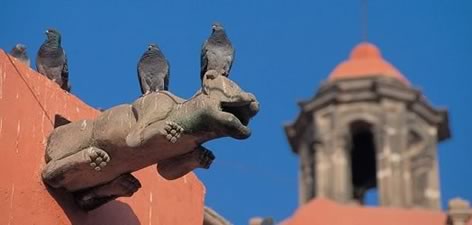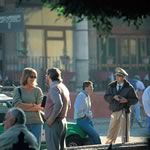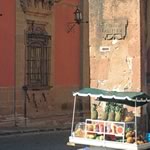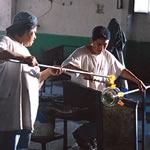
Introduction | History | Architecture | Lifestyle | General Information | Health & Safety | Weather | Location
| When a whole town is designated as a national monument, you can bet it has something very special to offer besides its age. To understand the magnetism of the charming town of San Miguel de Allende, more than four hundred and fifty years old, it is good to know a little of its history. |
| After Hernán Cortés conquered the Aztec Empire, México-Tenochtitlán (1521), the Spaniards were looking to consolidate the Conquest and acquire more wealth, so they decided to advance into the interior. When they marched northward, they discovered huge silver deposits, specially in Guanajuato and Zacatecas. Collaborating in the enterprise, missionary friars took part in the conquest by proselytizing and converting the natives. The southern part of El Bajío (lowland) was inhabited by Chichimeca Indians. Since these Indians used to attack the mule trains which |
|
 |
| were taking the gold and silver to Mexico City, the Viceroy ordered the founding of a Spanish city in the area. In 1542, a Franciscan friar, Fray Juan de San Miguel, arrived in the Chichimeca area and founded a mission. |
| San Miguel de los Chichimecas soon came to be known by the high-sounding name of San Miguel el Grande (Saint Michael the Great). This grandiloquent title distinguished it from other cities known also as San Miguel, and showed the outstanding position that this city achieved in industry and commerce during the Colonial period. |
 |
|
The workshops, the tanneries, the haciendas (Plantations), the cattle and other industries of San Miguel made it a busy commercial center during the eighteenth century. Its sarapes, blankets, woolen stuffs, cloaks, rugs, harnesses, machetes, knives, spurs and stirrups became within and outside of Mexico.
During that period the conspiracies which lead to the Independence of Mexico was conceived in San Miguel. The conspiracy was led by Ignacio Allende and father Hidalgo who was the parish |
| priest from Dolores Hidalgo, a town close to San Miguel. They were both of Spanish parents but born in Mexico. These people (called creoles) did not have the same opportunities as the pure Spaniards and were treated as second-class citizens. Because of this, they decided to fight against the king of Spain. On the night of September 15th, 1810 their plot was discovered, so they agreed to begin their campaign that same night by giving the Grito de Independecia (scream for liberty) in Dolores. On the morning of the 16th, |
Father Hidalgo delivered a rousing speech to the townspeople. That day, the fight for Independence started. The Independence from Spain did not become a reality until eleven years later, in 1821.
The town in the meantime endured difficult times: most of the leaders were executed and the industries were destroyed. In 1826, the town was given the status of city by Guanajuato´s government and after that its name was changed to San Miguel de Allende, in honor of the Independence hero, who was born here. |
|
 |
|
Subscribe to our Newsletter
|
| $50 Amazon Voucher up for grabs every month! Sign-up now »
|
Search Destination Traveler
|
|
|
Featured Destinations
|